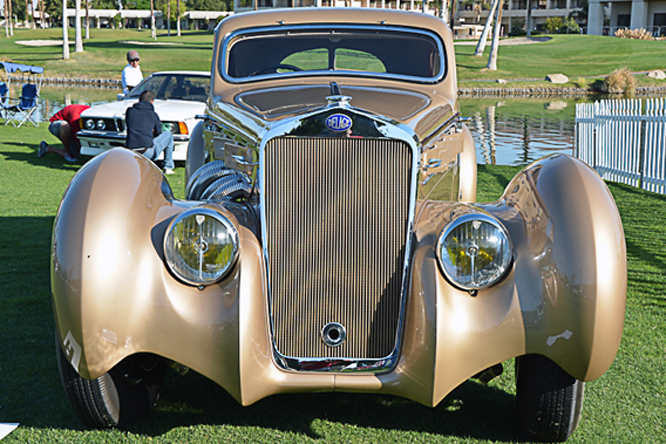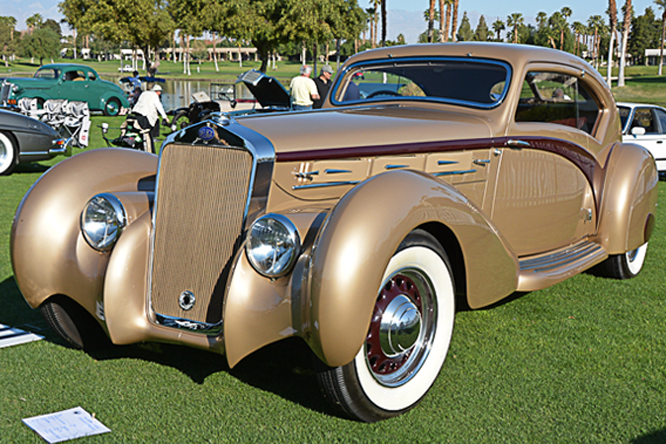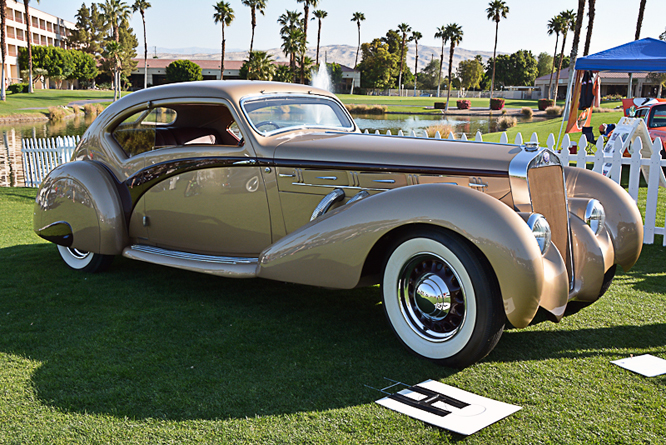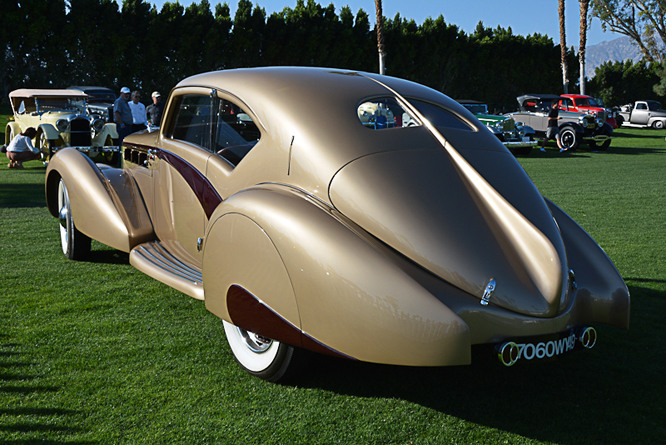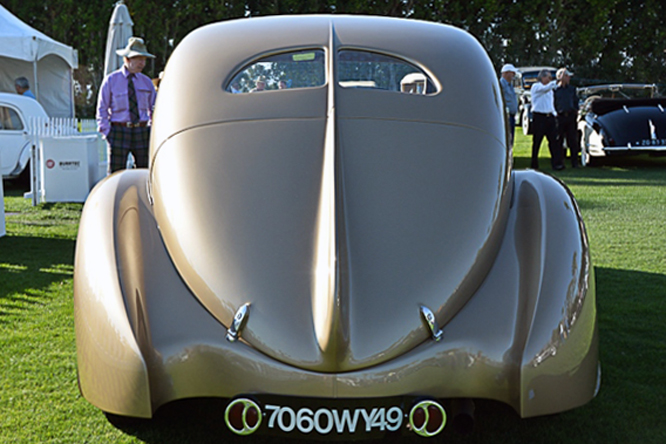In 1947 Anthony F. Lago and Carlo Marchetti designed the Talbot T26C Grand Prix open wheeler which featured a 4.5 litre / 274 cui straight six cylinder motor with triple carburetors which made it’s racing debut at Monaco in 1948. Despite requiring less fuel and fewer tyres during the course of races than the more powerful supercharged cars built by Maserati, Alfa Romeo and Ferrari the T26C was considered out dated but they did win two Grand Prix races in 1949.
In 1950 3 Talbot Lago Grand Prix cars, fitted with crude 2 seat bodies, cycle wings over the wheels and the necessary lighting for night driving, were entered in the Le Mans 24 hour race. The #5 driven for 23 and a quarter hours by Louis Rosier and the remainder by his son Jean-Louis came home first one lap ahead of the similar #7 driven by Pierre Meyrat and Guy Mairesse.
Six Talbot Lago’s were privately entered, as they had been in 1950, at Le Mans for 1952 but this time the French cars were comprehensively beaten by the Peter Walker entered Jaguar XK 129 C, C-Type, driven by Walker and Peter Whitehead who finished 9 laps ahead of Pierre Meyrat and Guy Mairesse who’s Talbot Lago completed three laps more than the previous year with the same overall result.
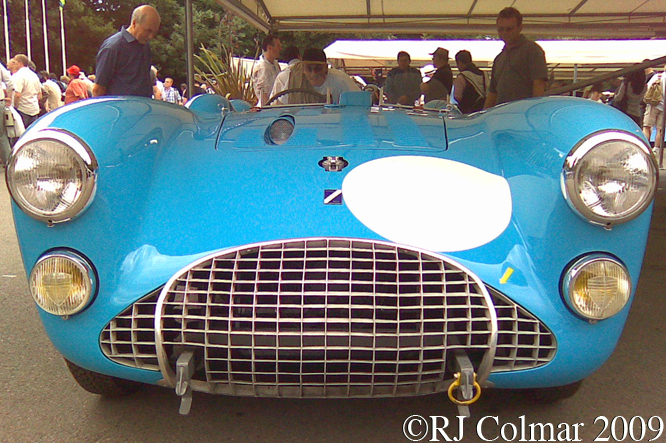
All six Talbot Lago’s were rebodied as a result of a change in body work regulations which effectively outlawed cycle winged cars at Le Mans in 1952. Pierre “Levegh” Eugène Alfred Bouillon took it upon himself to stay in his car chassis #11056 that he was supposed to be sharing with René Marchand for over 22 hours. While leading the pursuing Mercedes Benz cars by 4 laps “Levegh” missed a gear selecting 2nd instead of 4th with terminal consequences for his engine that caused his retirement, with just over an hour to go, handing an unpopular 1-2 victory to the Mercedes Benz team.
So far as I have been able to ascertain today’s featured car seen at Goodwood in 2009 is chassis #11056 raced in 1951 at Le Mans by the Argentinians Froilan Gonzales and Onofre Marimon who retired before half distance with a broken radiator.”Pierre Levegh” acquired the car in 1952 and body work by Charles Deutsch was fitted to comply with the new regulations effectively outlawing cycle wings over the wheels.
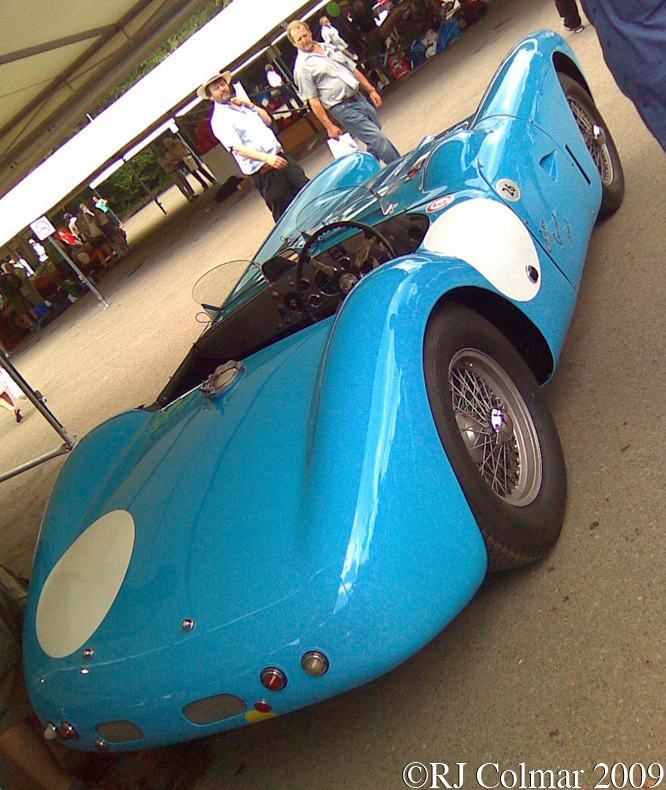
In 1953 “Levegh”, racing under the name of his uncle a racer who died at the wheel of a racing car in 1904, returned to Le Mans for a second time with #11056 now sharing the car with Charles Pozzi to finish a distant 8th 400 kms behind the winning C type Jaguar of Tony Rolt and Duncan Hamilton. Lino Fayen joined Levegh in 1954 but this time #11056 retired after just 33 laps.
Pierre Levegh raced this car in at least a dozen other events between 1952 and April 1955 winning two of them in 1952 and 1954 at Montlhéry. On the 11th of June 1955 Pierre Levegh was invited to join the returning works Mercedes Benz team at Le Mans, on lap 34 he was involved with a collision with a slower car that saw him and his blazing 300SLR fatally land on barriers while parts of his car were hurled into the crowd and killing 82 spectators and injuring 100 more.
During the 1970’s the Deutsch body work was abandoned and the car was refitted with cycle wing bodywork as used by Gonzalez and Marimon in 1951. In 2006 11056 appeared at Pebble Beach with a likeness of the Deutsch bodywork as used by Pierre Levegh but there are significant differences not least the wider radiator grill than seen in 1952 and the curious addition of a NACA submerged duct in the spare wheel cover on the right side of the vehicle. So far as I know such ducts did not appear on Talbot Lago’s until 1953 on chassis #11055 and certainly not on chassis #11056.
If this outline is at variance with your understanding of today’s featured car please do not hesitate to chime in below.
Thanks for joining me on this “One Shift Short Of A Hero” edition of “Gettin’ a li’l psycho on tyres” I hope you will join me again tomorrow. Don’t for get to come back now !
